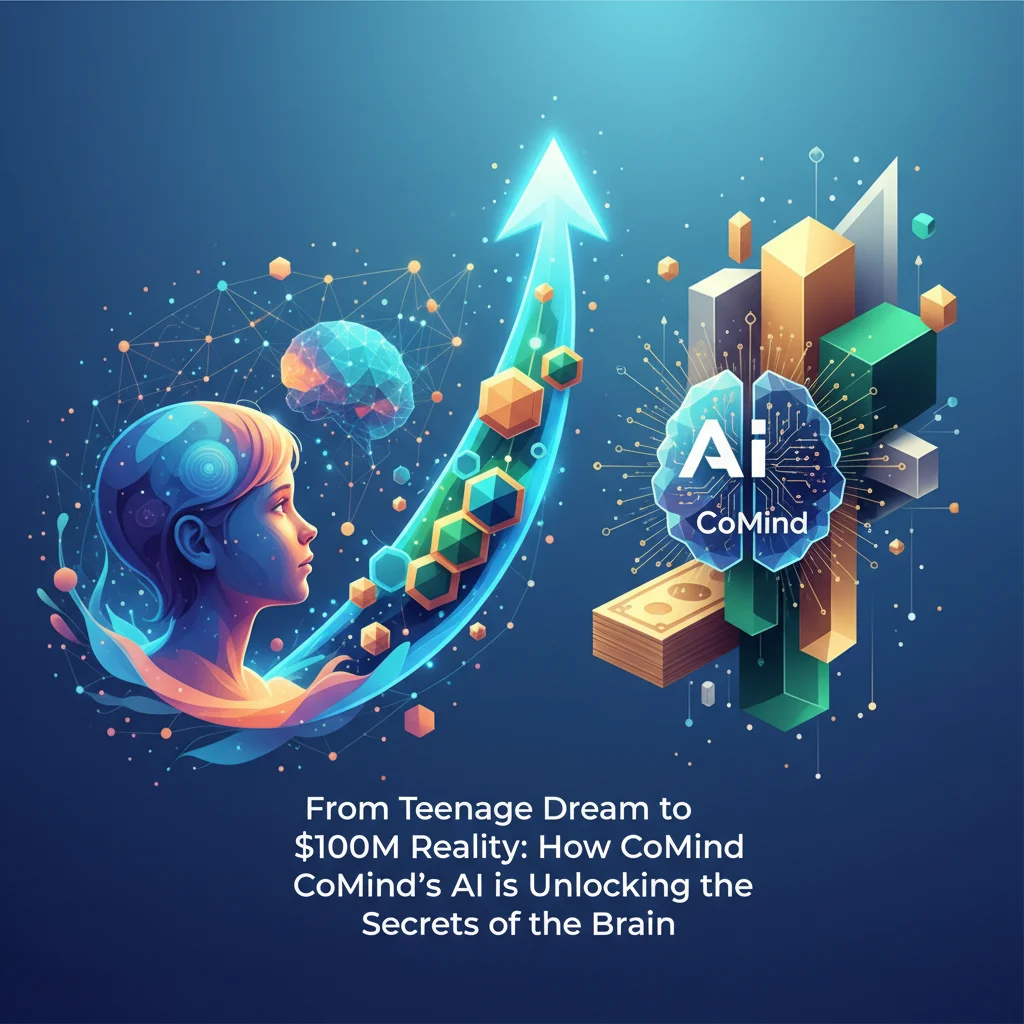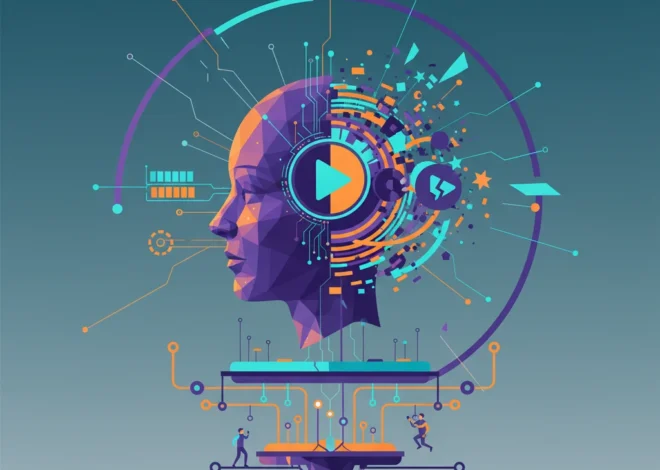
From Teenage Dream to $100M Reality: How CoMind’s AI is Unlocking the Secrets of the Brain
Imagine being a teenager, captivated by the most complex object in the known universe: the human brain. Now, imagine that fascination sparking an idea so powerful it eventually attracts $100 million in funding and puts you on a path to revolutionize modern medicine. This isn’t the plot of a sci-fi movie; it’s the real-life story of Tej Tadi and his London-based startup, CoMind.
In a world buzzing with tech innovations, CoMind stands out. It’s not just another app or a clever piece of software. It’s a deep-tech venture tackling one of healthcare’s most enduring challenges: understanding what’s happening inside our brains in real-time, without invasive surgery. The company is developing a non-invasive brain monitoring device that promises to give doctors an unprecedented window into neural activity, powered by sophisticated artificial intelligence and machine learning algorithms. This is the story of how a youthful vision is being engineered into a reality that could change millions of lives.
The Status Quo: A Blurry Picture of the Brain
To truly appreciate the innovation CoMind is bringing to the table, we first need to understand the current landscape of brain monitoring. For decades, clinicians have relied on a handful of core technologies, each with significant limitations.
- Electroencephalogram (EEG): This involves placing electrodes on the scalp to detect electrical activity. While non-invasive, it provides relatively low-resolution data, like listening to an orchestra from outside the concert hall. You know music is playing, but you can’t distinguish the individual instruments.
- Magnetic Resonance Imaging (MRI/fMRI): These massive machines use powerful magnets to create detailed images of brain structure and blood flow. They offer incredible detail but are enormous, expensive, and require the patient to be perfectly still. They provide a snapshot in time, not a continuous, real-time video.
- Invasive Probes: For critically ill patients, doctors sometimes resort to drilling a hole in the skull to place sensors directly on the brain. This provides the most accurate data but comes with substantial risks, including infection and brain damage.
This technological gap means that for many conditions—like strokes, traumatic brain injuries, or seizures—doctors are often working with an incomplete picture. They lack the continuous, high-fidelity data needed to make immediate, life-saving decisions. This is the very problem CoMind has set out to solve.
The Price of 'Free': Why Meta's Italian Lawsuit is a Wake-Up Call for the AI-Powered World
CoMind’s Quantum Leap: AI-Powered Neuro-Sensing
CoMind is developing a wearable, non-invasive headset designed to overcome the limitations of old-guard technologies. While the precise technical details are closely guarded, the approach hinges on a powerful synergy of advanced hardware and intelligent software.
The device aims to capture neural data with a clarity and depth previously only achievable with invasive methods. But the real magic happens next. Raw brain data is incredibly complex—a chaotic symphony of billions of neurons firing simultaneously. Human analysis alone is simply not enough to decode it meaningfully. This is where AI and machine learning become the star players.
The system will likely work like this:
- Data Acquisition: The headset continuously collects vast streams of neurological data.
- Cloud Processing: This data is securely streamed to a powerful cloud infrastructure, where it can be processed and analyzed in near real-time.
- AI Interpretation: Sophisticated machine learning models, trained on massive datasets, sift through the noise. They identify subtle patterns, anomalies, and critical biomarkers that are invisible to the human eye.
- Actionable Insights: The output isn’t just raw data; it’s a clear, intuitive dashboard for clinicians. The system could use automation to flag a potential seizure before it happens or show the exact area of the brain affected by a stroke, allowing for faster and more precise treatment.
By offering this as a service, CoMind enters the world of SaaS (Software as a Service), where hospitals subscribe not just to a piece of hardware, but to a continuous stream of life-saving insights. The implications for patient care are staggering.
To put CoMind’s proposed innovation into perspective, let’s compare it to traditional methods.
| Feature | Traditional EEG | fMRI | CoMind’s Approach (Projected) |
|---|---|---|---|
| Invasiveness | Non-invasive | Non-invasive | Non-invasive |
| Portability | Moderately portable | Immobile (room-sized) | Highly portable (wearable) |
| Data Stream | Continuous, but lower resolution | Static snapshots, high resolution | Continuous, high resolution |
| Core Technology | Electrical sensors | Magnetic fields | Advanced sensors + AI/ML |
| Primary Use | Seizure detection, sleep studies | Structural/functional imaging | Real-time monitoring for acute conditions |
Furthermore, the “black box” nature of some advanced AI models can be a hurdle in medicine, where clinicians need to understand why a system is making a recommendation. CoMind will need to ensure its algorithms are not only accurate but also interpretable. And let’s not forget the competition. While different in its approach, Elon Musk’s Neuralink has supercharged public and investor interest in the neurotech space. CoMind’s non-invasive strategy is a key differentiator and arguably a faster path to market for many applications, but they are now operating in a very high-stakes, high-visibility arena. Their 2027 target for selling their first device is ambitious, and hitting it will be a testament to their operational and regulatory excellence.
The Critical Role of Data and Cybersecurity
In the 21st century, every revolutionary piece of hardware is, at its core, a data-gathering device. CoMind’s headset is no exception. The value it creates is inextricably linked to the quality, volume, and security of the data it collects. This places an enormous emphasis on the company’s data infrastructure and, crucially, its cybersecurity posture.
Brain data is arguably the most personal and sensitive data that exists. A breach could be catastrophic, not just for the company’s reputation but for patient privacy and safety. CoMind will need to build a fortress around its data, employing end-to-end encryption, robust access controls, and continuous threat monitoring. This is a non-negotiable aspect of their business model and a core challenge that requires deep expertise in both software engineering and security protocols.
Digital Reckoning: Why an Italian Lawsuit Could Redefine Big Tech's AI Playbook
The Startup Journey: From Vision to Venture Capital
CoMind’s story is a powerful case study for entrepreneurs, especially those in the “deep tech” space where timelines are long and capital requirements are huge. It demonstrates several key principles for success:
- Tackling a Massive Problem: CoMind isn’t building a “nice-to-have” gadget. It’s addressing a fundamental, unmet need in a multi-billion dollar healthcare market. This is what attracts serious investors.
- A Compelling Vision: The ability to articulate a clear and audacious vision—to non-invasively decode the brain—is what captures the imagination and builds momentum.
- Patience and Persistence: This idea didn’t become a $100 million-funded company overnight. It was born from years of passion and development, starting with a teenager’s curiosity. Deep tech startups are a marathon, not a sprint.
- The Right Team: While the founder’s story is compelling, securing this level of funding requires a world-class team of scientists, engineers, and medical experts to build credibility and execute the vision.
For developers and tech professionals, the project represents a fascinating confluence of disciplines. It requires expertise in hardware engineering, embedded systems, advanced programming for real-time data processing, cloud architecture, and, of course, cutting-edge machine learning. It’s a playground for engineers who want to work on problems that truly matter.
The Algorithm on Trial: Why Big Tech's Italian Lawsuit is a Wake-Up Call for All Developers
What This Means for the Future
If CoMind succeeds in its mission and brings its device to market by its 2027 target, the impact will extend far beyond the emergency room. The ability to easily and continuously monitor brain health could unlock new frontiers in neuroscience.
Imagine a future where we can track cognitive decline in Alzheimer’s patients with greater precision, personalize depression treatments by observing their real-time effect on brain activity, or even optimize learning and focus. The technology could accelerate pharmaceutical trials for neurological drugs, providing immediate feedback on a drug’s efficacy.
CoMind’s journey is just beginning, but it serves as a powerful reminder of the incredible potential that sits at the intersection of human ingenuity, artificial intelligence, and a relentless drive to solve the impossible. It started with a teenage idea, and it might just end with us finally understanding the beautiful, complex machinery inside our own heads.


